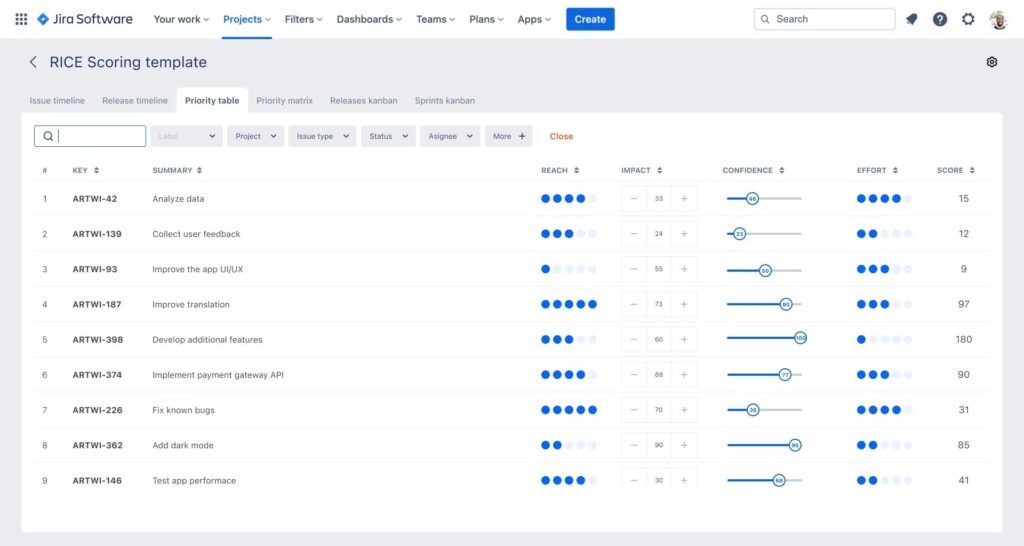In today’s business landscape, staying ahead of the competition requires more than just maintaining the status quo. More specifically, it demands continuous innovation.
However, having great ideas is not enough; organizations need a structured way to manage these ideas and turn them into actionable initiatives. This is where idea management comes into play.
Idea management is the systematic process of capturing, evaluating, prioritizing, and implementing ideas within an organization. It transforms the creative insights of employees, customers, and stakeholders into practical solutions that drive growth and success.
In this article, we’ll explore what idea management is, how it works, its benefits, and the best practices for effectively managing ideas in your organization.
Understanding idea management
It is the structured approach to handling ideas within an organization. Idea management involves collecting ideas from various sources, evaluating their potential, and prioritizing them based on criteria like feasibility and impact. Then, it will implement the most promising ones.
Therefore, this process ensures that valuable ideas are not overlooked and that innovation efforts are aligned with strategic objectives. Unlike a casual suggestion box, idea management involves a more organized and methodical system that guides ideas through a defined pipeline.
As a result, it ensures those ideas are nurtured and developed into tangible outcomes.
Why is idea management important?
Idea management is crucial for organizations because it provides a structured approach to harnessing the collective creativity of employees, customers, and other stakeholders. Here are the key reasons why idea management is important:
- Fosters innovation: Idea management enables continuous innovation by providing a clear pathway from idea generation to implementation, and it incorporates diverse perspectives for more creative solutions.
- Improves decision-making: It offers a structured evaluation process that ensures only feasible and strategically aligned ideas are pursued, allowing for data-driven decisions.
- Boosts employee engagement and morale: By empowering employees to share their ideas and recognizing their contributions, idea management increases engagement and fosters a sense of ownership.
- Enhances efficiency and reduces costs: A systematic approach streamlines the innovation process, saving time and effort, and can lead to significant cost savings by identifying efficient solutions internally.
- Maintains competitive advantage: By quickly implementing new ideas, organizations can stay agile, respond to market changes, and drive growth to maintain a competitive edge.
- Facilitates collaboration and communication: Idea management encourages cross-functional collaboration and improves communication by providing transparency into the innovation pipeline.
Who is responsible for managing ideas?
Such responsibility for idea management primarily falls on product managers. They oversee the influx and review of ideas, audit them, and steward these ideas from concept to implementation.

Additionally, product managers are responsible for identifying which ideas represent great opportunities and deciding which ideas align with the product vision and plans.
However, idea management is also described as a collaborative effort involving cross-functional teams across the company, including:
- Marketing and sales
- Customer support
- Engineering
- Operations
These teams contribute to idea generation and evaluation, providing functional expertise and valuable insights. This collaboration ensures that ideas are thoroughly reviewed from multiple perspectives and that the best ideas are prioritized for implementation.
The idea management process
1. Idea collection
The first step in idea management is to collect ideas from diverse sources. This could be through suggestion boxes, digital platforms, or structured programs like innovation challenges.
Modern idea management tools allow organizations to gather ideas from employees, customers, and stakeholders in a centralized system, making it easy to track and manage submissions. Ensuring that all ideas are captured in a single, accessible place is crucial for transparency and for making sure that no idea is lost in the shuffle.
2. Idea evaluation
Once ideas are collected, they need to be evaluated to determine their potential. Evaluation involves assessing ideas against specific criteria such as feasibility, alignment with strategic goals, potential impact, and cost.
This step may involve feedback from various stakeholders, including managers, experts, and sometimes even crowdsourced input from employees. The goal is to identify ideas that are not only innovative but also practical and valuable to the organization.
3. Idea prioritization
With many ideas on the table, prioritization is essential. Not all ideas can or should be pursued, so this step involves ranking ideas based on their evaluated potential and strategic fit.
Therefore, decision-making tools, such as scoring systems or prioritization matrices, can help streamline this process, ensuring that resources are allocated to the ideas that offer the most promise. Moreover, prioritization also helps organizations focus on what matters most and avoid spreading resources too thin.

4. Implementation
Turning prioritized ideas into reality is the most critical phase of idea management. This involves planning, developing, testing, and deploying solutions based on the chosen ideas.
Implementation requires cross-functional collaboration, clear communication, and effective project management to overcome obstacles and bring ideas to fruition. Success in this phase relies on having a structured plan, defined roles, and a commitment to follow through on the selected ideas.
5. Monitoring and feedback
Even after implementation, the process doesn’t end. Monitoring the progress of implemented ideas and collecting feedback is crucial for measuring success and identifying areas for improvement.
This step ensures that the ideas deliver the intended outcomes and allows for iterative adjustments as needed. Feedback loops help organizations learn from each implementation, refining their approach to idea management over time.
Conclusion
Idea management is a vital component of any organization’s innovation strategy. By systematically capturing, evaluating, and implementing ideas, organizations can turn creative concepts into actionable initiatives that drive growth and competitiveness.
Besides, effective idea management is not just about gathering suggestions. It is about creating a structured pathway to transform those suggestions into real-world results.
Now is the time to unlock the potential of your organization’s ideas and turn them into impactful solutions.
Related articles:




